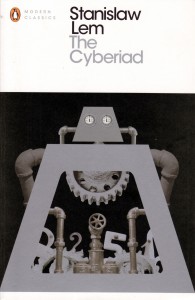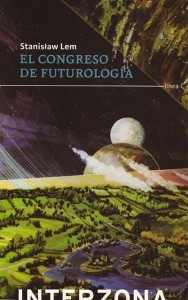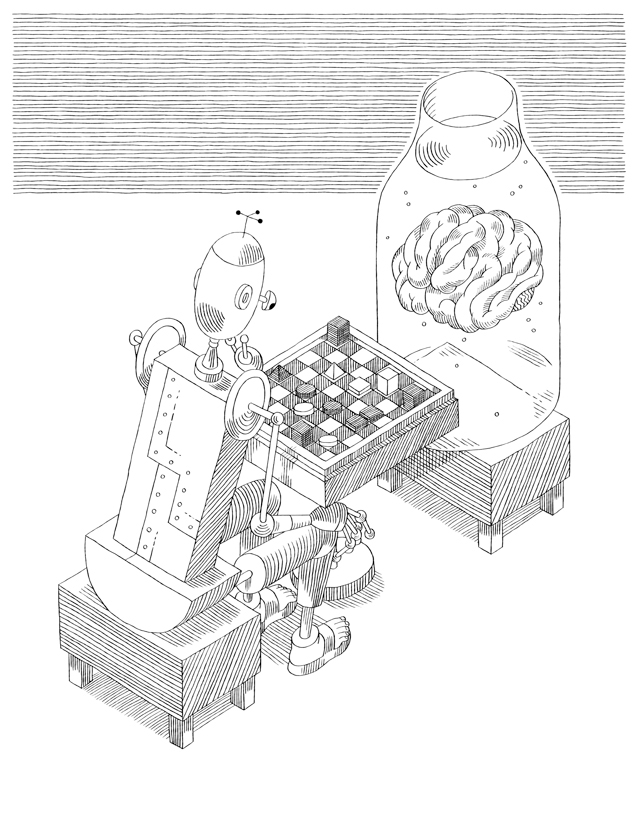 One day king Genius, a monarch with a philosophical bent, commissioned from Trurl the constructor three story-telling machines that were to amuse him. Their multi-layered stories within stories, „One Thousand and One Nights” of the cybernetic age, grotesque and philosophical at the same time, are woven of encrypted clues, allusions, literary references and scientific hypotheses. One of them features Karl Marx, hidden from the censorship of then- communist Poland under the name of Malapusticus Pandemonius. The result of putting Malapusticus’ social utopias into practice results in — quite expectedly — „chaos and carnage, and a devastating decline in the vital voltage, an enervated emf and energy dissipation everywhere.”
One day king Genius, a monarch with a philosophical bent, commissioned from Trurl the constructor three story-telling machines that were to amuse him. Their multi-layered stories within stories, „One Thousand and One Nights” of the cybernetic age, grotesque and philosophical at the same time, are woven of encrypted clues, allusions, literary references and scientific hypotheses. One of them features Karl Marx, hidden from the censorship of then- communist Poland under the name of Malapusticus Pandemonius. The result of putting Malapusticus’ social utopias into practice results in — quite expectedly — „chaos and carnage, and a devastating decline in the vital voltage, an enervated emf and energy dissipation everywhere.”
For in the Beginning there was naught but Formless Darkness, and in the Darkness, Magneticity, which moved the atoms, and whirling atom struck atom, and Current was thus created, and the First Light… from which the stars were kindled, and then the planets cooled, and in their cores the breath of Sacred Statisticality gave rise to microscopic Protomechanoans, which begat Proteromechanoids, which begat the Primitive Mechanisms. These could not yet calculate, nor scarcely put two and two together, but thanks to Evolution and Natural Subtraction they soon multiplied and produced Omnistats, which gave birth to the Servostat, the Missing Clink, and from it came our progenitor, Automatus Sapiens…
After that there were the cave robots, the nomad robots, and then robot nations. Robots of Antiquity had to manufacture their life-giving electricity by hand, that is by rubbing, which meant great drudgery. Each lord had many knights, each knight many vassals, and the rubbing was feudal hence hierarchical, progressing from the lowly to the higher-up. This manual labor was replaced by machine when Ylem Symphiliac invented the rubberator, and Wolfram of Coulombia, the rubless lightning rod. Thus began the Battery Age, a most difficult time for all who did not possess their own accumulators, since on a clear day, without a cloud to tap, they had to scrimp and scrounge for every precious watt, and rub themselves constantly, else perish from a total loss of charge. And then there appeared a scholar, an infernal intellectrician and efficiency expert, who in his youth, doubtless owing to some diabolical intervention, never had his head staved in, and he began to teach and preach that the traditional method of electrical connection—namely parallel—was worthless, and they all ought to hook themselves up according to a revolutionary new plan of his, that is in series. For in series, if one rubs, the others are immediately supplied with current, even at a great distance, till every robot simply bubbles over with ohms and volts. And he showed his blueprints, and painted paradises of such parameters, that the old circuits, equal and independent, were disconnected and the system of Pandemonius promptly implemented.
from The Cyberiad, translated by Michael Kandel





